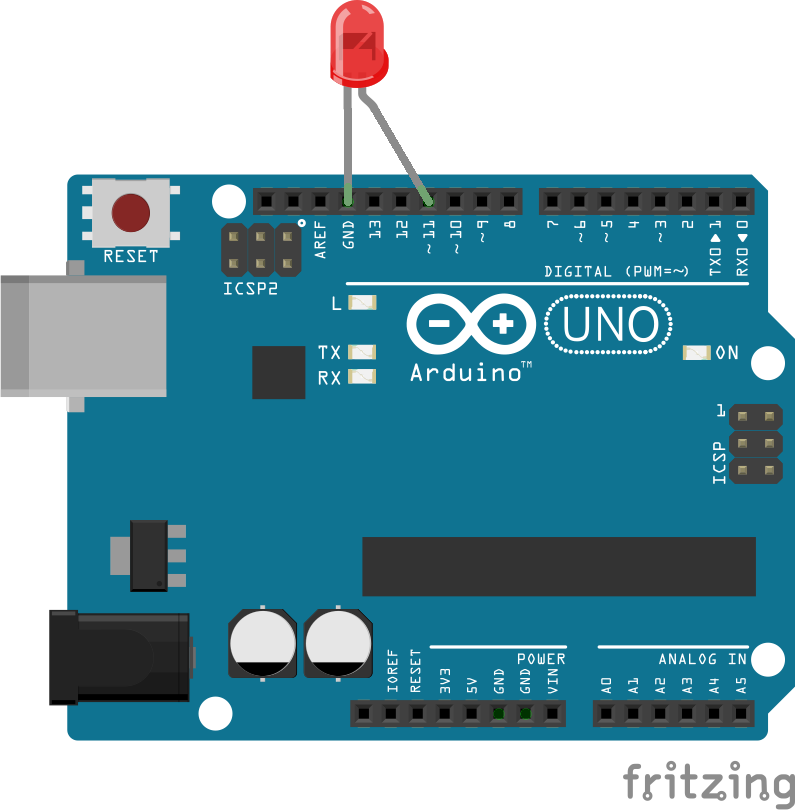Demonstrates stringing some of the LED commands together to demonstrate LED capabilities. Requires LED on pin that supports PWM (usually denoted by ~).
LED on pin 11 (Arduino UNO)
LED inserted directly into pin 11.

Fritzing diagram: led-11-pwm.fzz
Run this example from the command line with:
node eg/led-demo-sequence.js
const { Board, Led } = require("johnny-five");
const board = new Board();
let led;
// Do we want the sequence to loop?
const loop = true;
// Create a simple demo sequece that calls various
// five.Led methods with specified arguments and
// let it run for the given duration (defaults to 3 seconds).
const demoSequence = [{
method: "pulse",
args: [1000],
duration: 5000
}, {
method: "strobe",
args: [500],
duration: 3000
}, {
method: "fadeIn",
args: [
2000,
() => {
console.log("fadeIn complete!");
}
],
duration: 2500
}, {
method: "fadeOut",
args: [
5000,
() => {
console.log("fadeOut complete!");
}
],
duration: 5500
}, {
method: "brightness",
args: [10],
duration: 3000
}, {
method: "off"
}];
// Execute a method in the demo sequence
function execute(step) {
// Grab everything we need for this step
const method = demoSequence[step].method;
const args = demoSequence[step].args;
const duration = demoSequence[step].duration || 3000;
// Just print out what we're executing
console.log("led." + method + "(" + (args ? args.join() : "") + ")");
// Make the actual call to the LED
Led.prototype[method].apply(led, args);
// Increment the step
step++;
// If we're at the end, start over (loop==true) or exit
if (step === demoSequence.length) {
if (loop) {
step = 0;
} else {
// We're done!
process.exit(0);
}
}
// Recursively call the next step after specified duration
board.wait(duration, () => {
execute(step);
});
}
board.on("ready", () => {
// Defaults to pin 11 (must be PWM)
led = new Led(process.argv[2] || 11);
// Kick off the first step
execute(0);
});
